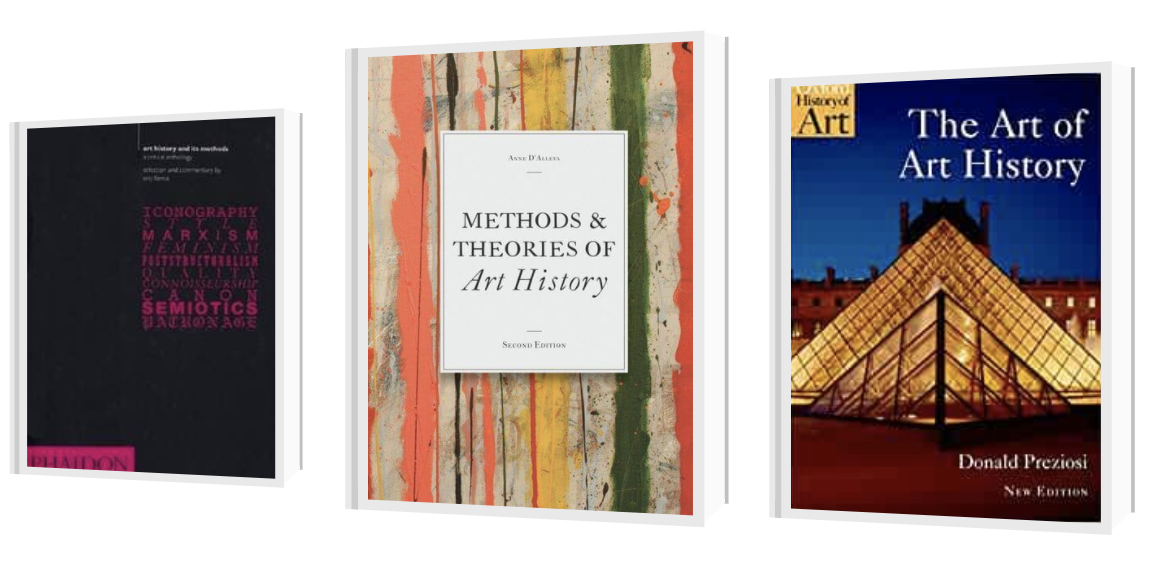Preparing for History of Art at University in 2024: Reading, Topical Issues, Oxbridge Interview Questions and More
In this blog, 1st Class History of Art Oxford graduate, Issy, leads you through her key recommendations for those thinking of applying for a History of Art degree, as well as prospective applicants approaching personal statement writing, Oxbridge admissions test and interviews.
Applying to study History of Art at University
Art history is a truly fascinating subject that investigates artworks and their makers throughout history. It goes far beyond just looking at pictures, however, embracing everything from philosophy and economics to religion and science in the endeavour to understand history, culture, and humanity through the visual culture of our predecessors.
If you haven’t studied art history at school, don’t worry! Most people applying won’t have either. Although art history is a subject that can seem intimidating from the outside, once you start reading around the subject and spending time looking at artworks, you may be surprised how much what you have studied in other subjects can help you. The most important things to show in your application are a passion for the subject and an ability to think intelligently about the issues and topics that are relevant to it.
What should I read for History of Art Preparation?
Introductions to the History of Art
These books will give you a good, chronological introduction to different ‘periods’ in art history. Don’t feel you need to read every word, but having a good overview of the key themes and characteristics of art historical periods will be useful to you.
Pay close attention to the visual characteristics as well as the historical context of each period, as being able to talk about these and make comparisons will help you when it comes to discussing an unseen artwork if you are invited to a picture interview.
E. H. Gombrich, The Story of Art (2007) – good (albeit old fashioned!) introduction to art history from a largely western and ‘canonical’ perspective.
Tony Godfrey, The Story of Contemporary Art (2020) – picks up where Gombrich leaves off and takes us right up to the present day.
Robert Hughes, The Shock of the New: Art and a Century of Change (1991) – a deeper dive into the fascinating story of art of the 20th century. Brilliantly written and accompanied by a great BBC documentary series.
John Fleming and Hugh Honour, A World History of Art (2009) – a comprehensive compendium of art-making from all over the world. The most inclusive and broad in scope of the above.
Theoretical approaches to History of Art
Studying any subject at university level means bringing different ‘theoretical’ approaches to bear on it e.g. gender theory, social history, anthropology, psychoanalysis, postcolonial theory...
These books provide a good introduction to the key methodological approaches we might apply to a work of art. The texts can be quite overwhelming and complex, but reading the introductions and dipping into the topics that jump out at you will give you a good start:
Eric Fernie, Art History and Its Methods: A Critical Anthology (1995)
Anne D’Allev, Methods & Theories of Art History (2012)
Donald Preziosi, The Art of Art History: A Critical Anthology (2009)
NB: These texts all discuss similar topics so by no means feel you need to read all three!
Interesting perspectives on art
Short and sweet, these fascinating books by important art historical thinkers are great for getting you thinking differently about approaches to art and its study:
Linda Nochlin, Women, Art, and Power and Other Essays (1988) – landmark essays on female artists and women in art history from a pioneering feminist art historian.
John Berger, Ways of Seeing (1972) – a unique, accessible and hugely influential book on the way we look at art. Vital reading!
Edward Said, Orientalism (1978) – a hugely important postcolonial study of the history and nature of Western attitudes towards the ‘East’ (Asia, North Africa, and the Middle East) in art.
Susan Sontag, On Photography (1977) and Regarding the Pain of Others (2003) – two fascinating critiques in which Sontag asks searing questions about the moral and aesthetic quandaries raised by the acts of taking, displaying and responding to photographic images.
Grayson Perry, Playing to the Gallery (2014) – a witty and inclusive take on the contemporary art scene and the question of value in art.
Topical issues in Art History
These are some of the key topics and debates art historians are thinking about at the moment:
Decolonising the museum and reconstitution. Check out Alice Proctor’s new book ‘The Whole Picture’ for a powerful introduction to the problematic colonial histories of western museum culture.
What is art? This is a broad question embracing everything from ‘material culture’ (objects of cultural and historical interest that were not designed or displayed as ‘artworks’), to contemporary art, to art in a digital age. Plenty of food for thought!
Questioning the canon. The canon of art history has historically excluded women and people of colour, as well as many other groups. Think about why this might the case, how historians and museum curators can begin to rectify this, and what obstacles and challenges they might face. Linda Nochlin’s essay ‘Why Have Their Been No Great Woman Artists?’ is a fantastic introduction to some of the issues at hand.
The value of art. What makes an artwork valuable? The market? Provenance? Quality? The Salvator Mundi case is a good one to look up with regard to these questions.
Beyond the library
Museums and exhibitions
Once museums and galleries are reopened, it’s important to visit exhibitions that you can talk about in your personal statement or your interview. Pay attention to the curation of the exhibition: what is the story or argument being put forward? How have they hung the artworks? What is the design? What do you like/dislike? Check out my blog, “Why Trips To Art Galleries Should Be On Every Student’s Curriculum” for more direction on what to look out for when you visit a museum/ gallery.
If museums don’t re-open in time, think instead about how museums and galleries have responded to the pandemic. What do you like/dislike about their online offerings? What would you have done differently?
Events and talks
Museums and galleries often run great events programmes where you can hear curators and artists talk about the subject from all different angles.
Podcasts
There are some great art history podcasts to get stuck into:
The Great Woman Artists
Bow Down
The Lonely Palette
Art Detective
Talk Art
Meet Me at the Museum
A History of the World in 100 Objects
Check out The Great Women Artists Podcast - here’s a rundown of the latest episodes!
Art news
You certainly don’t need to know the ins- and outs- of the art market, but if a big story has appeared in the news then its worth having a read. Having an informed opinion on relevant and current news shows that you’re interested enough to keep abreast of what’s going on in your chosen field.
What is an Oxbridge History of Art interview like?
The typical structure involves two interviews: a discussion and an unseen picture interview.
Interview 1
Discussion of:
Your application (personal statement, object essay and submitted work). You might be asked to expand on things mentioned in your personal statement, so make sure you feel comfortable talking about everything you’ve said in more depth.
A recent book or exhibition you have enjoyed.
Topical issues in art history.
Interview 2 - Picture interview
A visual analysis of an unseen artwork. Remember, this is not about getting the ‘right’ answer, but a chance to show how you approach looking at an artwork. When might it have been painted? Who might have commissioned it? Why has the artist chosen to paint their subject in this way? You could practice this by buying some postcards of artworks and spending some time discussing them with a family member of friend.
Past Oxbridge Interview Questions:
1. Why do you want to study art history?
2. What is the definition of ‘art’?
3. How do museums impact the way we look at art?
4. What are we trying to reveal when we study art?
5. How do we determine the value of art?
6. Who should own art?
7. Why is art important?
8. What role do galleries/museums play in society today?
9. Talk about a recent book or exhibition that has made you think differently about art.
Looking for a History of Art tutor/ support with your application?
Looking for GCSE, A-Level or IB History of Art support? Need help planning & writing your History of Art personal statement? Preparing for an Oxbridge History of Art interview? We have a large team of wonderful Art History mentors, all educated at Oxford and Cambridge, who are well-placed to support. Contact us for full details!
Sessions from £70/h + VAT.






